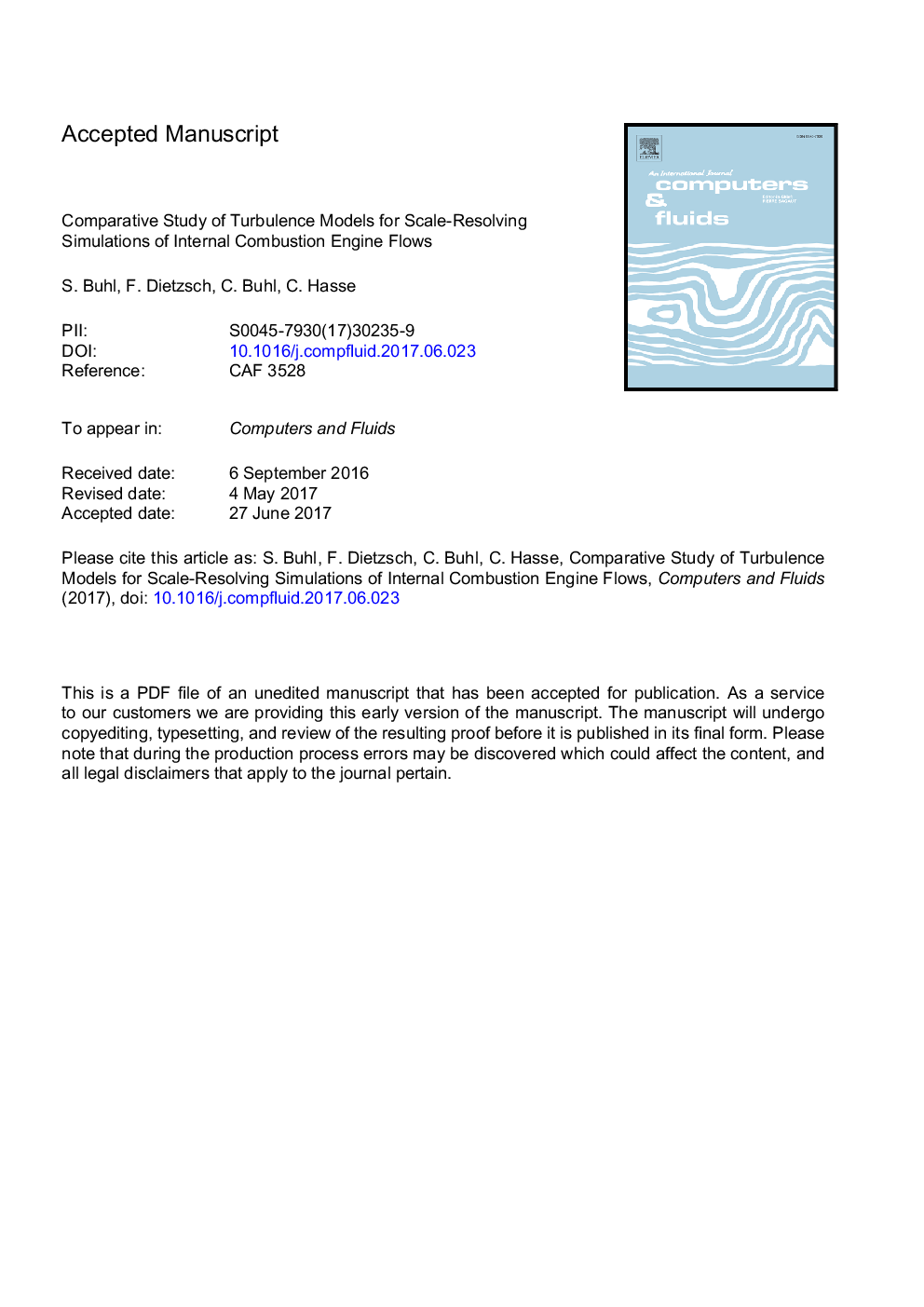| کد مقاله | کد نشریه | سال انتشار | مقاله انگلیسی | نسخه تمام متن |
|---|---|---|---|---|
| 5011742 | 1462655 | 2017 | 35 صفحه PDF | دانلود رایگان |
عنوان انگلیسی مقاله ISI
Comparative study of turbulence models for scale-resolving simulations of internal combustion engine flows
ترجمه فارسی عنوان
بررسی مقایسه ای مدل های آشفتگی برای شبیه سازی مقیاس حل معادلات جریان موتور احتراق داخلی
دانلود مقاله + سفارش ترجمه
دانلود مقاله ISI انگلیسی
رایگان برای ایرانیان
کلمات کلیدی
موضوعات مرتبط
مهندسی و علوم پایه
سایر رشته های مهندسی
مکانیک محاسباتی
چکیده انگلیسی
Scale-resolving simulations (SRS) are becoming more and more important for internal combustion (IC) engine simulations and are gradually replacing first-generation unsteady Reynolds-averaged Navier-Stokes (URANS) based approaches. In addition to the substantial improvement in the prediction of the local flow and mixing processes and their interaction with the spray and the turbulent flame, SRS are essential for the quantification of cycle-to-cycle variation (CCV) of coherent structures and sporadically occurring phenomena such as misfire and knock. However, the choice of a suitable scale-resolving turbulence model for specific applications such as ICÂ engine flows is still an unresolved issue even in the scientific community. Typically, turbulence models are developed and validated for well-defined test cases and it is not clear whether these findings are also valid for flows in complex geometries with moving boundaries, where local flow structures might be significantly different. The flow in ICÂ engines is characterized by strongly varying Reynolds numbers and exhibits several flow phenomena such as wall boundary layers, stagnation points, free-stream shear layers and edge-induced flow separations. The current paper is a systematic comparative study of selected and well-established scale-resolving turbulence models in the context of an ICÂ engine flow focussing especially on the intake stroke. Different classical LES models (Smagorinsky, WALE, Sigma), a hybrid model (DES-SST) and a second-generation URANS model with scale-resolving capabilities (SAS-SST) are compared against each other. The models' accuracy and capability to capture fluctuations, local flow structures and CCV during the tumble formation in the intake phase are investigated for a well-established ICÂ engine benchmark case with a single non-moving valve. Though this is a simplified setup, it provides the unique possibility to compare the results to reference data obtained from experiment and direct numerical simulations (DNS). In a first step, the predicted averaged velocity and the resolved fluctuations obtained with the different models are compared to each other and to the reference data. Afterwards, the local structure of the resolved fluctuations is investigated in terms of an invariant analysis of the anisotropy tensor. Finally, the capability to resolve CCV is investigated based on the averaged and instantaneous tumble center, a large-scale flow structure specifically important for engine flows.
ناشر
Database: Elsevier - ScienceDirect (ساینس دایرکت)
Journal: Computers & Fluids - Volume 156, 12 October 2017, Pages 66-80
Journal: Computers & Fluids - Volume 156, 12 October 2017, Pages 66-80
نویسندگان
S. Buhl, F. Dietzsch, C. Buhl, C. Hasse,
